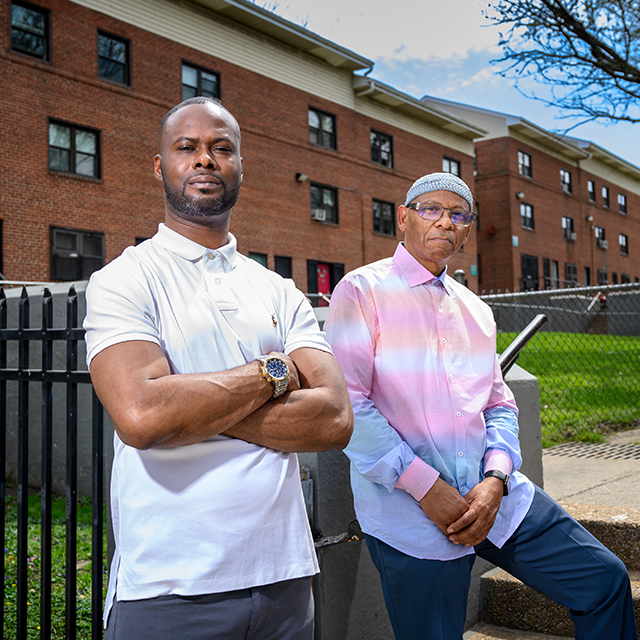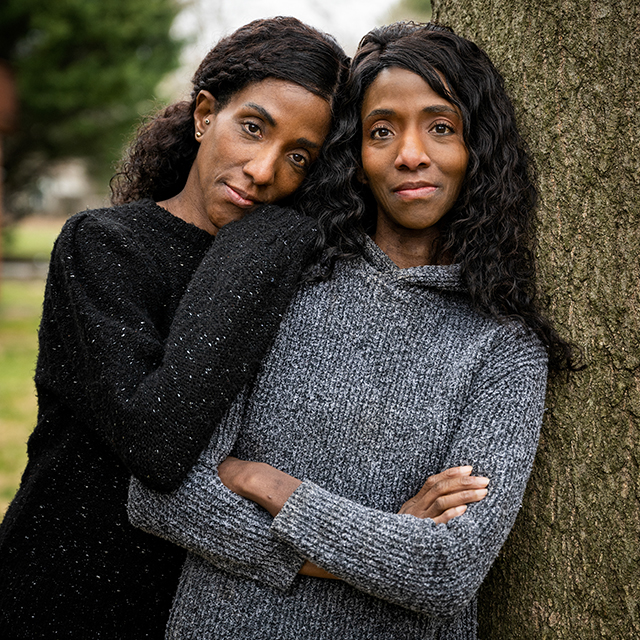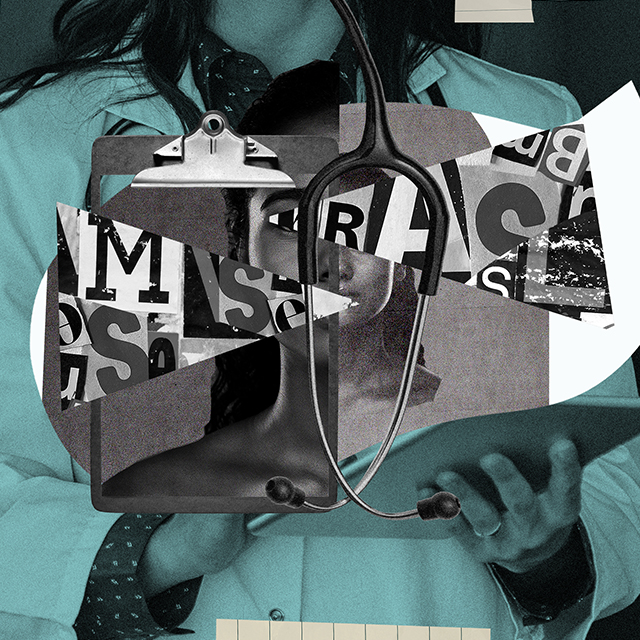Two years ago, in her intern year, Johns Hopkins medical resident Cat Ahlberg encountered the sickest person of her brief medical career: a woman in her 50s* with advanced liver failure. The woman, Ms. S, arrived at Johns Hopkins Bayview Medical Center vomiting blood. Ammonia and other toxic substances, which the liver would normally remove, had built up in her body, causing her to become confused and, by the time Ahlberg saw her in the intensive care unit, unable to answer any questions.
The medical team wondered if she had an infection, either in her abdomen, where about 20 liters of excess fluid had collected as the result of damage to her liver, or in the membranes around her brain and spinal cord, a condition known as meningitis. To test for an abdominal infection, they could withdraw some of the fluid, a procedure called a paracentesis, which would also relieve the swelling. To test for meningitis, they needed spinal fluid.
First, however, they needed consent, something the patient was in no position to provide. When the hospital’s social workers searched for someone who could decide on Ms. S’s behalf they came up empty-handed.
“We found an estranged brother and then her neighbor, neither of whom wanted to be involved,” Ahlberg says. “She truly had no one who could make decisions for her.”
In the meantime, Ms. S’s condition had continued to deteriorate. In addition to needing support from a breathing machine, her kidneys began to fail, and she experienced several episodes of massive bleeding. Although the team brought them under control, the bleeding triggered a realization.
“We weren’t helping her; she was not getting better. In fact, we were just seeing her get worse and worse,” Ahlberg says. A question naturally followed: “Are we just doing more harm than good by continuing to treat all of these things?”
Without knowing Ms. S’s wishes, and without input from someone who knew her well, the team had to determine on their own how aggressively to continue fighting to keep her alive.
‘Part of Everything We Do’
While the details and the stakes change from case to case, physicians regularly face fraught situations — a consequence of the very nature of practicing medicine, notes Joseph Carrese, a professor of medicine at the school of medicine and a faculty member at Johns Hopkins University’s Berman Institute of Bioethics.
“Absolutely every single interaction that medical students, residents and practicing physicians have with patients and family members includes a moral dimension,” Carrese says. “Ethics is part of everything we do.”
Carrese directs the Ethics in Clinical Practice teaching program that reaches residents in eight departments in the school of medicine. Building off education that medical students, including those at Johns Hopkins, have already received, the program aims to increase residents’ awareness of ethical issues and to prepare them to handle the often difficult situations in which they arise.
“When there is a conflict or a concern” — as with Ahlberg’s liver failure patient — “it’s important to be knowledgeable and to have the skills to handle the situation,” Carrese says.
Discussions of clinical ethics often focus on unusual, high-stakes cases, especially end-of-life decisions. At the outset, the program for residents at Johns Hopkins was intended to have a more quotidian focus.
“We wanted to design a curriculum to make residents sensitive to the kinds of common ethical issues physicians face daily,” says Jeremy Sugarman, deputy director for medicine at the Berman Bioethics Institute.
Sugarman, Carrese, founding Berman Institute director Ruth Faden and other Berman Institute faculty members established the formal resident ethics teaching program in 2006, with financial gifts from the Freeman and Blaustein families. Since 2007, it has benefited from generous and sustained support from The Johns Hopkins Hospital’s leadership, initially during Ronald Peterson’s presidency and more recently from the current president, Redonda Miller.
A major aim of the clinical ethics teaching program, Sugarman says, remains to help residents determine what ethical issues they can handle on their own, versus those that require input from others, such as from a hospital’s ethics consultation service.
The teaching program currently reaches about 400 residents at The Johns Hopkins Hospital and Bayview campuses in pediatrics, surgery, ophthalmology, neurology, child and adolescent psychiatry and gynecology/obstetrics, as well as the two internal medicine programs at The Johns Hopkins Hospital and Bayview campuses. The curriculum varies significantly among these departments, based in part on the needs of each training program. Surgery residents, for example, practice obtaining informed consent and delivering bad news to actors portraying patients. Meanwhile, for a week each year, pediatrics residents participate in small-group discussions focused on issues that come up in the outpatient setting, a part of the teaching program led by Rebecca Seltzer, an Ethics in Clinical Practice faculty member.
Research by the program’s faculty has identified common themes in the issues physicians encounter, such as the need to maintain an alliance with children’s parents, or concerns about the cost of care and other systemic issues. These observations inform the training, which incorporates cases the residents have themselves encountered. By discussing these encounters with their peers and with faculty, the residents have the opportunity to reflect on difficult situations and consider how best to handle similar issues should they arise in the future.
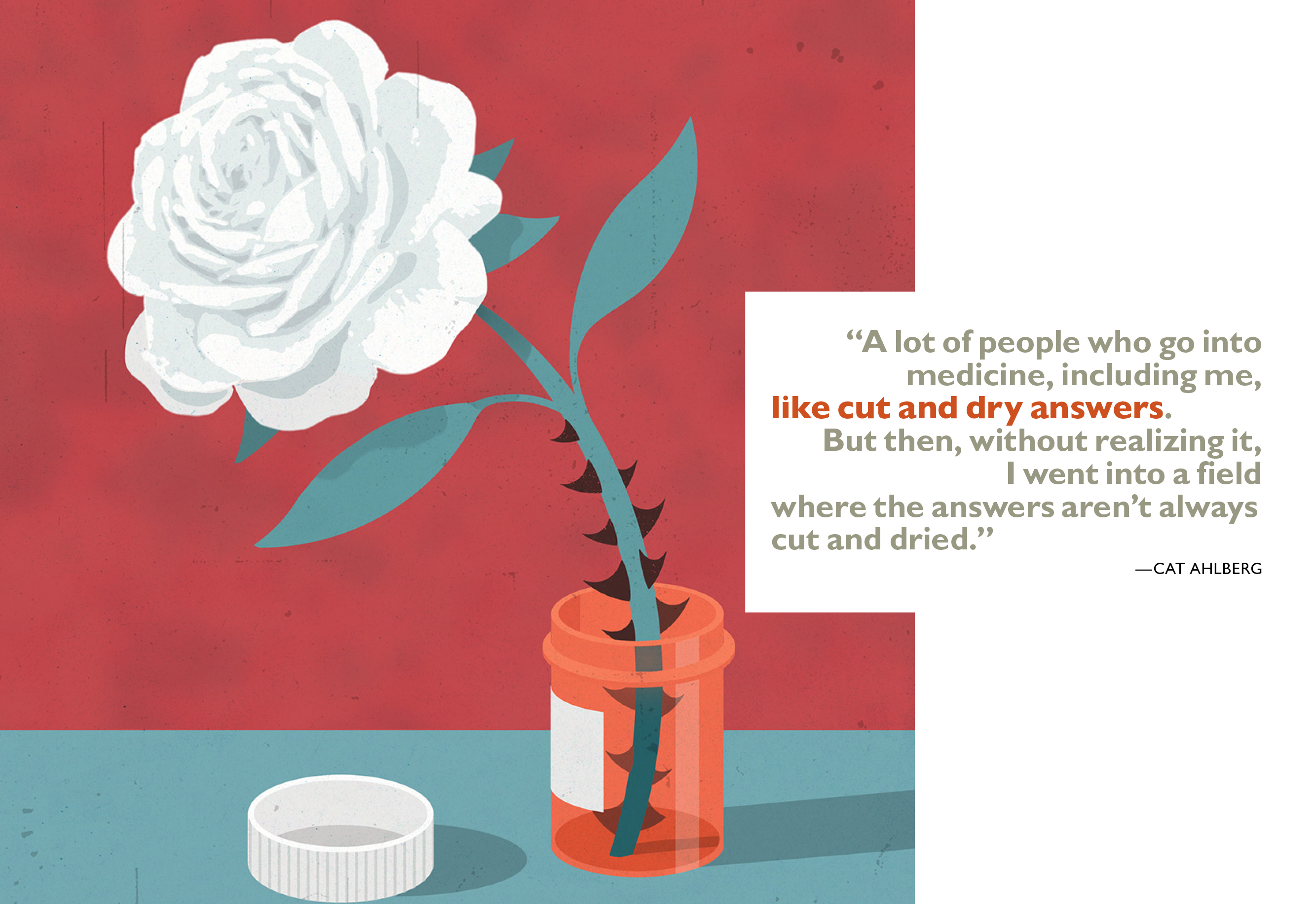
Talking it Out
Periodically, residents in internal medicine at Bayview, where Ahlberg is training, present a patient story for discussion at the monthly Ethics for Lunch conference, which is open to all internal medicine residents, medical students and hospital staff members. Carrese asked Ahlberg, who has a master’s in bioethics from Case Western Reserve University, to lead one of these sessions. She chose to focus on the challenge of unrepresented patients like Ms. S who become incapacitated and have no one willing to make decisions on their behalf.
Carrese was already familiar with that case. He served on the team that responded when Ms. S’s medical team sought guidance from the hospital’s ethics consultation service.
As a chair of Bayview’s ethics committee, which offers input when physicians encounter challenging cases, Carrese says he sees situations like this several times a year. As a primary care provider, he tries to prevent them. In his meetings with patients, he asks them to think about who might speak for them if they can’t speak for themselves and to document that decision. He also discusses how aggressively they want to be cared for under different circumstances, including if they face a low chance of recovery.
He remembers, for example, talking with a bus driver who was nearing retirement age, had no close friends and was estranged from his family.
“I made sure I had conversations about, down the road, if this scenario [were] to occur, what would your preferences be,” Carrese says. “I try to do that with all of my patients, but for him in particular.”
Finding a Framework
While it’s possible to head off some challenging circumstances in advance, others arise inevitably. When Hurricane Maria hit Puerto Rico, the storm threw Vivian Altiery De Jesus, then a third-year medical student, headlong into the practice of disaster medicine.
She remembers the staff of one San Juan hospital making excruciating decisions. The hospital, for example, had enough mechanical ventilators, but not enough active electrical plugs to operate them all, forcing medical staff members to choose which patients would get access to breathing support. Experiences like this sparked Altiery De Jesus’s interest in ethics and led her to pursue a master’s in bioethics at the Berman Institute between her third and fourth years of medical school.
“I felt we were doing everything okay, but I couldn’t understand how or why we were reaching those decisions,” she says.
Now a second-year resident in internal medicine on the Bayview campus, she no longer deals with such dramatic shortages of resources. But trying situations still arise.
In her intern year, she remembers caring for a woman who had fainted, without explanation, for the third time. The woman arrived on the cardiac progressive care floor, where Altiery De Jesus was working, with an eye bruised from her fall. The results of a CT scan of her head found no evidence of a neurological cause, such as a stroke, so the team wanted her to get an echocardiogram to see if a heart problem was responsible. But they never had the chance. The woman said she was caring for three children alone, had a job that wouldn’t accept a medical note to excuse her absence, thanked them for their help and left.
The encounter saddened Altiery De Jesus and made her feel a little hopeless. The woman’s condition appeared serious. If something happened to her, what would happen to her kids? Altiery De Jesus wondered. She also found it humbling. “We are here with our medical recommendations, but we usually understand little about a patient’s perspective.”
Altiery De Jesus told this story as part of an Ethics Morning Report session, another conference that is a component of the overall ethics curriculum at Bayview. Patients have the right to refuse medical care, and, not infrequently, as the fainting patient did, they leave against medical advice, also known as AMA.
In discussing this story and patients leaving AMA in general, Altiery De Jesus focused on physicians’ reactions to these cases.
“The first step is to be aware that an AMA discharge is emotionally heavy,” she says. She then contrasted the story of the fainting patient with another scenario, drawn in part on her experience with a second AMA case: What if instead of saying she needed to leave to care for her kids, the patient said she needed to leave to buy drugs?
“Some reasons may trigger stigma, some may trigger empathy,” Altiery De Jesus recounts saying. “That’s the danger. If you go by your feelings, then you will deliver different health care” — a violation of a physician’s ethical obligation to provide equal care.
To move past her own emotions, she turns to one of the analytical tools she learned during her master’s degree and that her ethics education as a resident reinforced. With this approach, physicians examine a situation from four perspectives: medical indications; patient preferences; patient’s quality of life; and context, such as legal, financial or cultural issues. Drawn from the book Clinical Ethics by Albert Jonsen, Mark Siegler and William Winslade, these four topics are a core component of the clinical ethics curriculum medical students and residents at Johns Hopkins and elsewhere learn.
In addition to the four topics, the framework taught at Johns Hopkins includes five questions: What is your concern? Is it an ethical issue? What are the facts of the case? What other information may inform your thinking? What action will be taken? Johns Hopkins’ Mark Hughes, an Ethics in Clinical Practice faculty member, provided this sequence based on his experience at Georgetown University’s School of Medicine.
While this framework applies to all fields of medicine, the specific issues physicians face can vary. In pediatrics, for example, young patients can’t consent to their own treatment, so physicians must also navigate parents’ needs and wishes.
A second-year resident in pediatrics at Johns Hopkins Children’s Center, Maneesha Sakhuja recently learned the true reason the mother of a toddler patient hesitated to vaccinate him. Although now healthy, the child had spent time in the neonatal intensive care unit, where his mother had watched him cry as the staff drew his blood for tests.
By talking with the boy’s mother and father, Sakhuja found out that shots and blood tests brought back those distressing memories. To spare the mother the anxiety and still make sure the boy received this care, Sakhuja spoke with the family about having the father bring the boy to appointments when vaccines or blood tests are needed.
While dealing with a situation like this one, Sakhuja says she does not run through the formal ethical framework in her head. Instead, she relies on a mindset she has cultivated through her training, as a resident and through earlier experiences, including earning a graduate certificate in bioethics through the School of Public Health and the Berman Institute. “I know what questions I should be asking of the patient, of the family and of myself to reach a decision that feels more balanced,” she says.
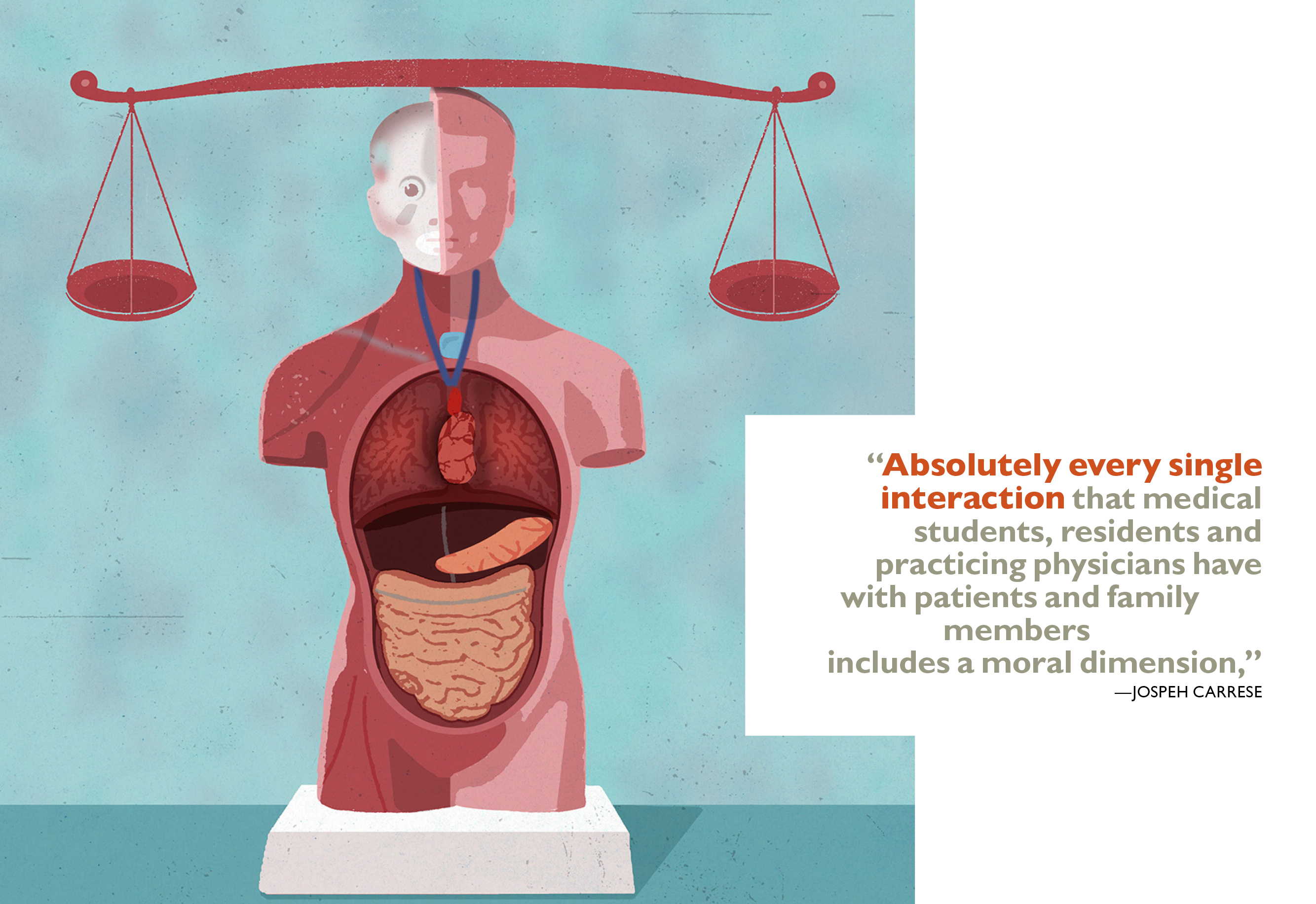
The Power of Hindsight
Getting to this point — where residents feel they have the skills to handle ethically-charged situations — can mean re-evaluating past experiences. In her intern year at The Johns Hopkins Hospital, Lauren Johnson encountered a case that, two years later, she would handle differently.
At the time, a man suffering from sickle cell disease arrived on her internal medicine floor, in handcuffs and accompanied by two prison guards. The incarcerated patient was experiencing a sickle cell crisis, meaning malformed red blood cells were blocking his blood vessels, causing pain and spilling potassium into his blood as the cells broke down. To remove the excess potassium, which creates a risk of a dangerous, irregular heartbeat, the team needed him to take a laxative.
“He was saying, I’m shackled to a bed, I do not want to defecate on myself, which is, not unfairly, how he felt about using a bedpan,” Johnson remembers.
The room had a private bathroom, but the prison guards declined to unshackle him so he could use it. After holding out for some time, the man experienced an episode of chest pain and relented. It felt, Johnson says, like watching a “mental game of chicken.”
Although she found the decision to keep the man handcuffed to the bed upsetting, Johnson didn’t think to challenge it, but she has since reconsidered. As she prepared to present this patient’s story at a lunchtime conference in February, she decided to look up the policy in Maryland governing this kind of situation. Her research led her to a protocol for unshackling incarcerated patients so they can use the bathroom. Were she to encounter a similar situation now, she says she would make a point of setting that process in motion as quickly as possible.
Johnson’s experience also points to a larger ethical lesson, according to Zackary Berger, an Ethics in Clinical Practice faculty member. Inequity, incarceration and other issues much bigger than individual physicians impact the care they provide, he says. “Thinking about systemic causes and advocating for patients — that’s ethics as well.”
‘We Don’t Always Know What to Do’
On March 29, Ahlberg described Ms. S’s cascading medical issues to an audience at Bayview’s Ethics for Lunch conference. Afterward, she posed a series of ethical questions raised by her story: How, for example, do physicians make decisions for the unrepresented patient? How do nonessential procedures, like those that provide comfort, fit in?
Carrese, who helped facilitate the discussion that followed, remembers one resident pointing out that, when caring for patients who have neither the capacity to make decisions nor anyone else to assume that responsibility for them, physicians must rely on the “best interest standard,” and in doing so think of a hypothetical “reasonable person.” This standard — defined by what an average patient would want under the same circumstances — helps clinicians find the appropriate balance when weighing a procedure’s potential benefit, such as reducing suffering, with any risks it entails.
Ahlberg remembers someone else framing physicians’ obligations for unrepresented patients like Ms. S in other terms: “In these cases, our default is to do everything to keep someone alive, but the minimum required to do so.”
This approach is defined as much by law as by clinical ethics. Ahlberg told the audience that Maryland law dictates that to perform a procedure without consent, physicians must determine that it qualifies as “emergent,” meaning the patient faces possible death or serious and immediate harm without it. Any other interventions need to wait until the hospital can find a proxy decision maker or the courts appoint a guardian, a process that can take months.
Delaying all procedures not deemed emergent, however, raises its own ethical concerns. Some ethicists have pointed out that limiting care so strictly can increase suffering and cause poorer outcomes for patients who are, by virtue of being unrepresented, already vulnerable, Ahlberg pointed out.
In Ms. S’s case, the team decided to forgo withdrawing fluid from her abdomen and from her spine. While the paracentesis would have, in theory, made her more comfortable, the team suspected her mental state would prevent her from experiencing any relief it brought. They worried, too, about the effects removing so much fluid would have on her kidneys. As for the potential infection, they could reasonably assume she had one and give her antibiotics.
Not long afterward, the team faced another decision. Ahlberg asked her attendees to consider their dilemma: How should concerns about medical ineffectiveness — when treatment can neither reduce nor prevent a patient’s decline — influence the care they provide to a patient like Ms. S?
At this point, the team knew that if Ms. S’s heart stopped, they could restart it through CPR or perhaps other dramatic measures. However, they knew that doing so would not lead to her recovery.
After seeking input through the hospital’s ethics consultation service, they decided to keep her current care, including the breathing tube, in place. However, they changed her code status to Do Not Resuscitate. When her heart did finally stop beating, they did not intervene.
Looking back on her experience with Ms. S, Ahlberg feels the team made the right calls.
“A lot of people who go into medicine, including me, like cut and dried answers. If you have an infection, we’ll give you antibiotics. Or, you have kidney failure, let’s put you on dialysis,” she says. “But then, without realizing it, I went into a field where the answers aren’t always cut and dried. We don’t always know what to do.”

